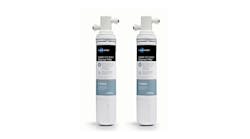ST. PAUL MINN. — The Hazeltine National Golf Club is a place as steeped in history and tradition as any golfer could wish. The private club located in Chaska, Minn., (about 30 minutes southwest of downtown Minneapolis) was opened in 1962 boasting a course designed by Robert Trent Jones.
Built specifically for hosting national championships, Hazeltine has seen more United States Golf Association events than any other club in the county and is preparing to host the 2016 Ryder Cup.
In June of 2010, Hazeltine began a $15 million renovation that included updating the course, adding a learning center, a practice center, and constructing a new 50,000-sq.ft. clubhouse from the ground up. At every step, careful consideration was taken for the impact renovations would have on the club’s members and guests — more than 60,000 people visit each year.
“Without a reliable supply of hot water, our club simply cannot function,” explained Matt Murphy, the manager of Hazeltine, and the man overseeing the entire renovation project. “From our kitchen and culinary staff to guest services and locker rooms down to our onsite laundry facility, dependable hot water is critical.”
To address his hot water issues, Murphy approached Dakota Mechanical of St. Paul, Minn. Dakota — a division of Summit Fire Protection — is a full-service mechanical that has served throughout the metropolitan areas of the Twin Cities for the past nine years.
The specialty of the company has been offering complete turnkey solutions to commercial clients.
According to Brad Glynn, the company’s service department manager, “Our focus — and my focus throughout my career — has been full mechanical design-build solutions for direct-to-owners, or negotiated with general contractors, while doing either improvement or new building where we can provide some expertise up front.”
Because Dakota was in on the project from the very start they were able to review the original specifications, which called for two 130-gal., 400,000 Btuh water heaters and a 200-gal. storage tank. Glynn turned to NCS Corp., a manufacturer’s representative firm, to review his options.
In the end, Glynn recommended eliminating the proposed storage tank and replacing the two commercial hot water units with three SPIDERfire, 100-gal., 300,000 Btuh units, each capable of delivering 408-GPH at 100°F rise.
“We were looking at a pretty dynamic facility,” said Glynn, “with varying degrees of operation — times when not much capacity was needed, and times when a great deal was needed. So we were looking to set up a situation where it would work something like an on-demand system. We still wanted some of the hot water reserve planning of a traditional system.”
The 93% efficiency boilers installed in parallel delivered a recovery rate of more than 1,000 gal. per hour. Not only would the system have more than sufficient capacity, having three units increased the system’s redundancy and dependability.
“Certainly, we wouldn’t have any water shut-downs,” Glynn said. “We could have one unit fail and still have plenty of hot water – no members or guests would notice the difference while we were replacing one heater.”
The new design also offered a smaller footprint that saved space in the mechanical room. First, it would eliminate the bulky storage tank altogether, but in addition the SPIDERfire boilers have a 26 ¼-inch diameter that worked out to be 21% smaller than the original unit specified.
A further benefit was an aesthetic one. By using PVC to vent horizontally, Dakota’s techs would be able to position the air intake and exhaust terminations where they were obscured from public view, something not possible with a straight vertical run.
“The biggest challenge,” Glynn said, “was fitting the mechanical systems in with the aesthetic quality the architect wanted to maintain. So they wanted an old, classic clubhouse look with a sloped slate roof and some large, cool, bold stone and wood features on the exterior. So a serious part of our job was hiding those big pieces of mechanical equipment within a really beautiful building.”
With all its benefits the revised boiler room design was an easy sell. Working in stages alongside the general contractor, Dakota Mechanical with a crew of about 20 that included HVAC techs, sheetmetal workers, pipefitters and plumbers did everything from pre-construction design to the rough-ins, the install and even the commissioning after everything was finished.
The work included 34 lavatories, 16 kitchen fixtures, 13 shower stalls, therapeutic footbaths and the onsite laundry. For the boiler system Glynn used an electronic manifold to control the sequencing of unit operation.
“By alternating usage among the three units,” Glynn said, “the system will not overburden any one heater. This type of daisy-chain design typically saves space and energy when compared with high-Btu commercial water heaters that must maintain large hot water reserves 24/7/365.”
Dakota Mechanical’s work began in the design/planning phase in January 2010 and was completed by early fall of that year. The final contract value for the job was approximately $1.1 million.
“They’ve been through their first golf season,” Glynn said, “which is now drawing to a close here in Minnesota. They’re hosting events, typically daily in their ballroom, and on some weekends are busier than that. The system is working great, specifically the plumbing systems and the hot water. The Rheems are doing a fantastic job and we’ve had no issues.”
Club manager Murphy is in enthusiastic agreement.
“We are very pleased with the outcome of this extensive course and facilities renovation, and especially our new clubhouse,” he said. “We’re experiencing a 20-30% reduction in our energy costs for the new clubhouse, despite increasing our square footage by 25%.”
While it’s difficult to make comparisons between the old system and the new, Murphy attributes the bulk of his savings to the high-efficiency of his new water heating system.




